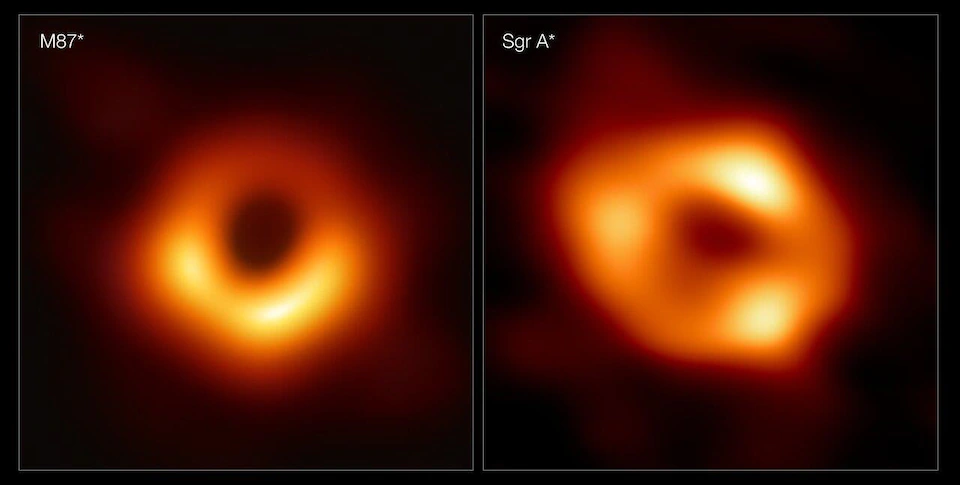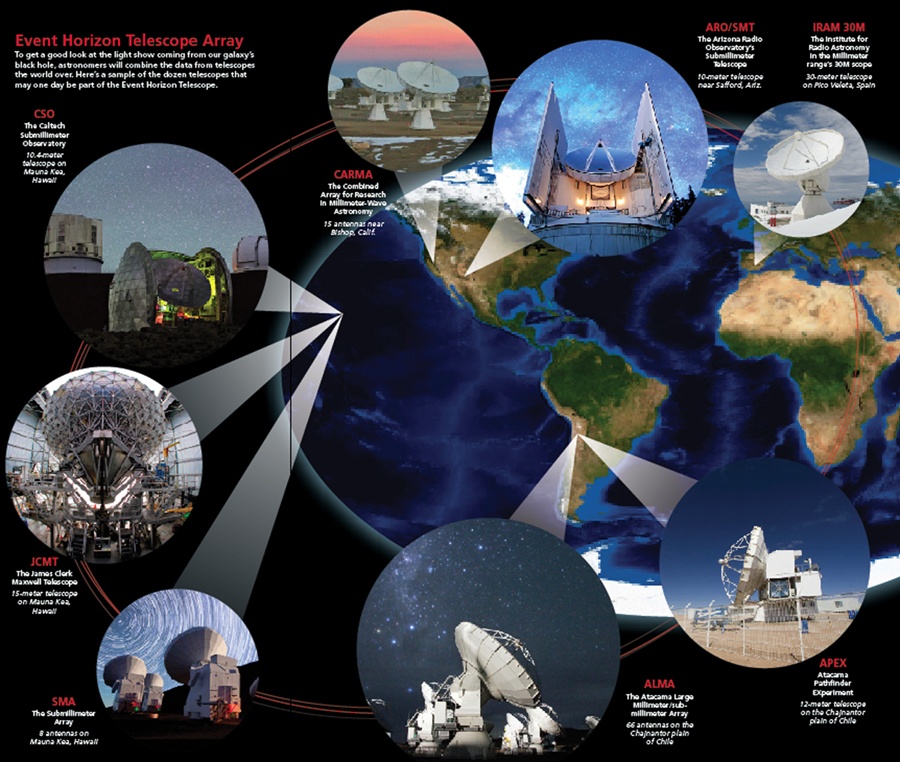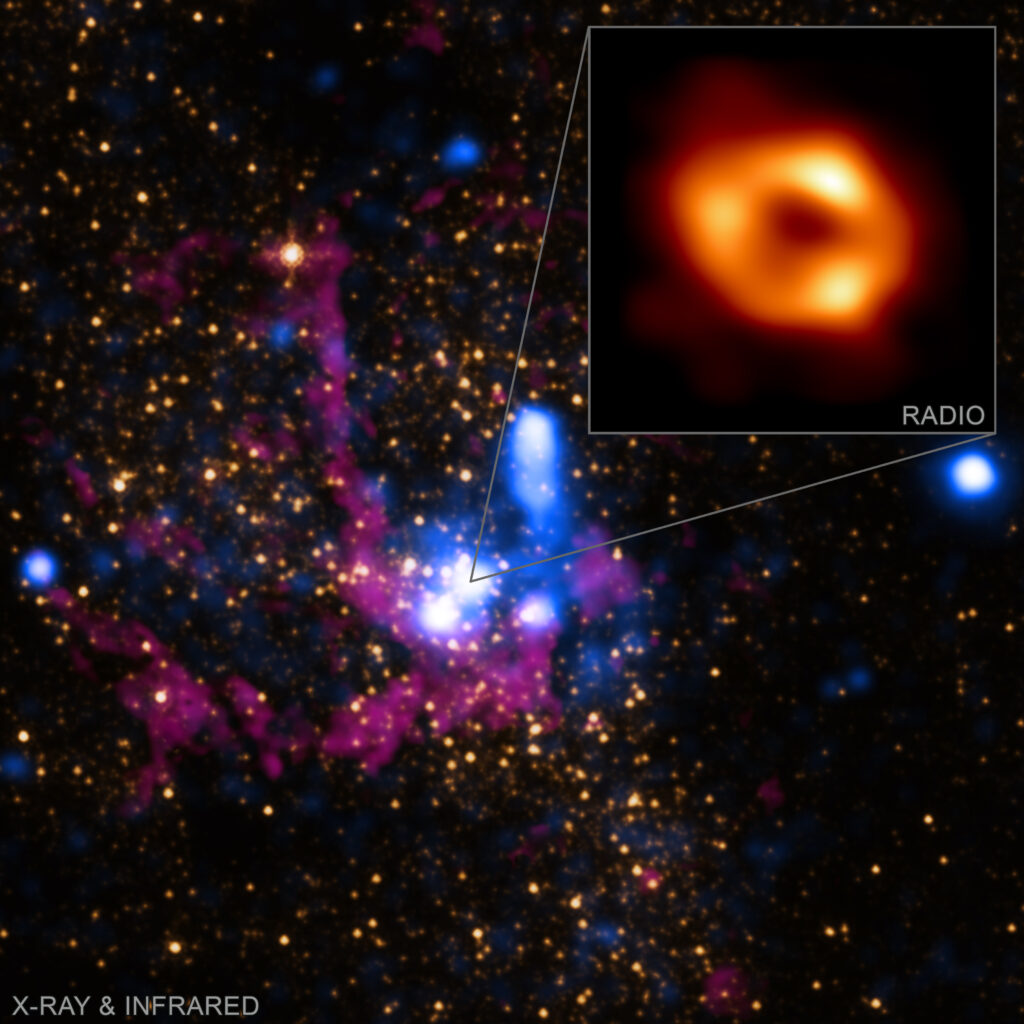Remember the first photo ever of a black hole published in 2019? Well, now we’ve got something quite similar in our own galactic backyard.
For many years, we’ve contemplated what lies at the heart of the Milky Way. Researchers have hypothesised that a supermassive black hole by the name of Sagittarius A* sits there at the centre around which the galaxy revolves.
On May 12th, 2022, an image of Sagittarius A* have been published after being captured using the Event Horizon Telescope (EHT), which provides direct proof for the existence of the black hole.
And it looks like a beautifully lit doughnut.
In fact, it looks pretty similar to the 2019 photo of the black hole at the centre of a faraway galaxy called Messier 87 (M87) — the first photo ever of a black hole.
Despite the similarity in the photos, those two black holes are in no way similar in size or mass. The M87 black hole is actually a thousand times larger and more massive than the black hole at the centre of our galaxy.

Radio astronomer and director at the Max Planck Institute for Radio Astronomy (MPIfR), Anton Zensus, said: “Our discovery shows that the object at the galactic centre is indeed a black hole”.
Since a black hole does not emit radiation, it cannot be visible by itself. However, what outlines it is the glowing gas around it — otherwise known as the event horizon (explained below).
And capturing a photo of a black hole is no easy deed.
Astrophysicist Dimitrios Psaltis said once that “taking a picture of [the black hole in the centre of the Milky Way] would be equivalent to taking a picture of a DVD on the surface of the moon.”
It requires a huge telescope. And size matters in astronomy. The bigger your telescope, the better.
In fact, the Event Horizon Telescope that allowed researchers to observe this black hole is a network of eight radio observatories distributed around the globe working in unison to form one Earth-sized telescope.
In other words, the telescope we used to photograph the black hole is as big as our planet!
Fun fact: The EHT can achieve a resolution of 20 micro-arcseconds. This resolution is high “enough to read a newspaper in New York from a sidewalk café in Paris.”
Once again, the EHT has helped us see what was invisible to us not too long ago. Such a feat is a testament to the scientists that are pushing the boundary of knowledge every day. This ever-growing ability to observe, learn, and understand cannot happen without science.
But what exactly is a black hole?
Black holes are some of the weirdest, yet most fascinating cosmic objects ever discovered. They literally absorb not only our attention and interest but also everything that comes close to them.
A black hole is a massive point in space with a very large amount of gravity that not even light can escape.
In simpler words, it is a place in space that absorbs anything that passes by it, even the fastest thing in the universe — light; thus the name black hole.
Consider Earth’s gravity, for example. If you throw a ball upwards in the air, the ball will gradually slow down until it reaches a point where it stops mid-air and then falls all the way back to Earth. If it weren’t for gravity, the ball would ideally continue going upwards, away from Earth.
Instead of throwing a ball, consider flashing light into the sky. If you were to do this close to a black hole instead of on Earth, the light wouldn’t have the chance to even go upwards. Its fate is to fall into the hole, just like you and everything else, due to the immense gravity that is there.
What does a black hole look like?
To you, an observer from afar, a black hole would look like a wholly black sphere in space; which means it’s pretty darn difficult to see one.
You see, it is not possible to observe a black hole using conventional methods, let alone your naked eye, because it is by definition, the absence of light; plus it’s quite far from us. Lucky us!
But what we are able to see is a ring-like formation of light around the black hole, just like in those photos.
This is what scientists call the event horizon.
What is an event horizon?
Suppose you are sitting on a beach, sunbathing, enjoying a drink and looking ahead at the waters. The farthest you can actually observe is defined by your horizon — where the sky meets the sea. You cannot see anything that lies beyond your horizon.
Similarly, when you look at a black hole, the farthest you can see is defined by the event horizon. Anything that crosses that horizon cannot escape the black hole’s gravitational pull and would disappear into oblivion.
In other words, we are only able to see black holes by seeing their event horizons. That is the boundary, the surface, the limit beyond which nothing can escape.







